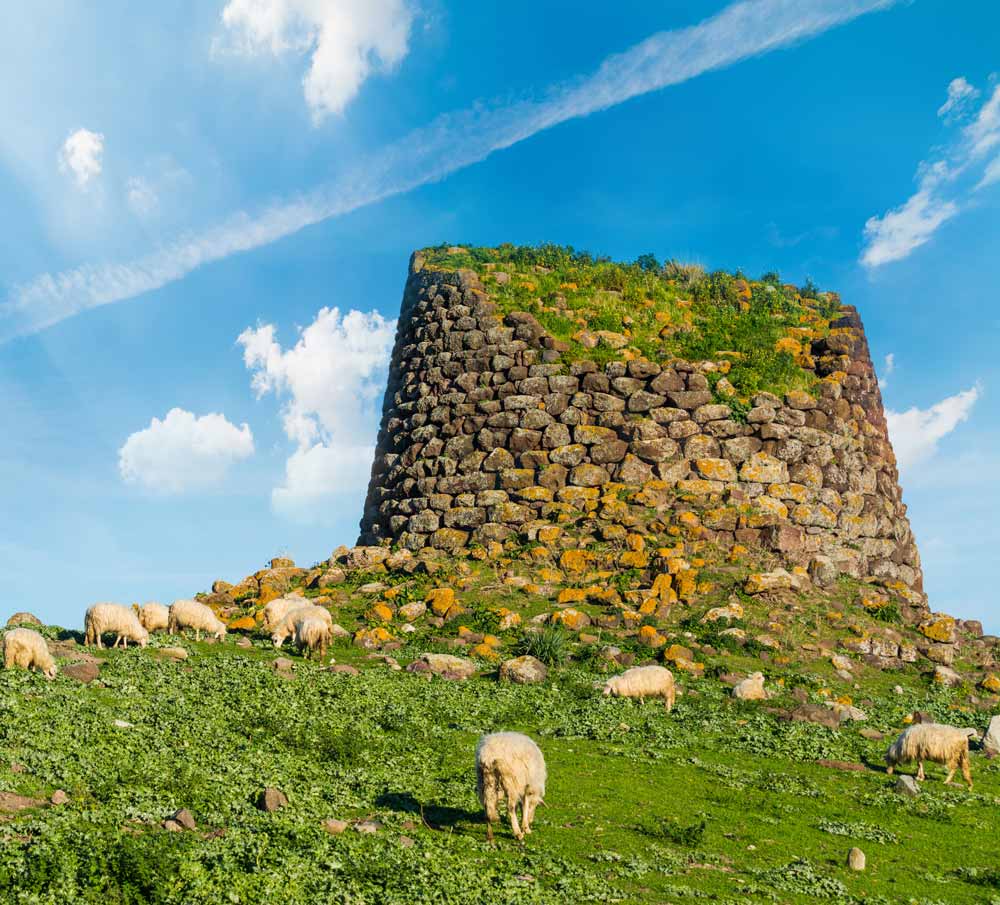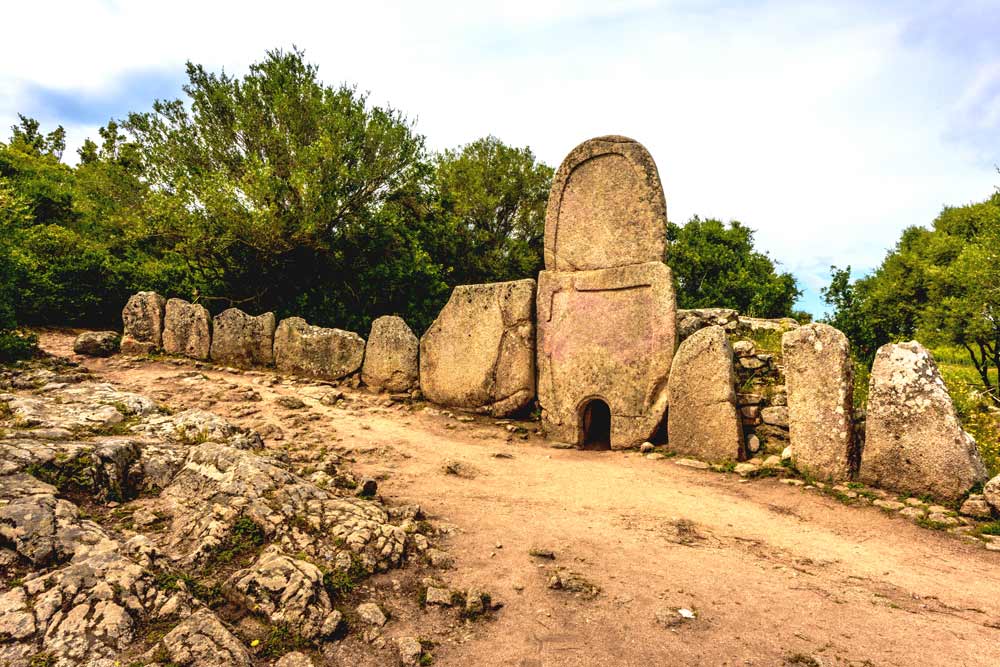story
breathe and experience

A LONG AND EXCITING HISTORY.
Whether one can do justice to the entire history of what is after all the second largest island in the Mediterranean with a single contribution may be doubted. Finally, human remains around 150,000 years old were found in 1979. So the settlement of Sardinia goes back to the Paleolithic Age, back to the Paleolithic , when people just began to make stone tools. After all, this article gives you a short and concise overview, or rather, a look back at the history of this fascinating island. In further articles in this section we will present selected historical excursion destinations that are guaranteed to enrich your trip in more detail in the future.
A travel through
the time
But back to our supposedly “short” journey through time … The volcanic rock glass obsidian that occurs in the Monte Arci mountain range is ultimately thanks to the fact that the people in Sardinia had very good conditions for spreading. The lava rock, which is rarely found in Europe, could be ideally used as a tool due to its sharp edges and thus contributed significantly to the development of civilization.
If you visit Sardinia and travel in different regions, you will quickly notice a certain diversity. Due to different influences, the regions still differ greatly from one another in various ways. This was as early as 6,000 years before Christ, when different cultures shaped the image of the island and livestock and agriculture spread. Particularly noteworthy, however, is the nuragic culture , which began around 1,600 BC during the Bronze Age. In the truest sense of the word did a great job. Today you can still find more than 3,000 (!!!) of probably 10,000 tower-like buildings on the entire island, the nuraghi , which this culture left behind and after which they were named.

Nuraghi
Further evidence of the time that can still be admired today are the mystical-looking giant tombs . They are monuments of the Bonnanaro culture , from which the Nuragic culture later developed.
A variant of the giant tombs, the Domus de Janas (in German: houses of the fairies) can be found mainly in northwest Sardinia in the Goceano region.
Other well-known giant tombs are the Li Lolghi and the Coddu Vecchiu near Arzachena , about 25 kilometers from Santa Teresa Gallura .
We take a leap in history to the time of the Phoenicians and Punians , who expanded their respective empires from the North African coast. The Phoenician phase began in the 9th century BC. And lasted until about 550 BC. Your famous center of power, Carthage, on what is now the Tunisian coast, is only 100 kilometers from Sardinia. That in the 9th century BC Nora , founded by the Phoenicians in the south of the island, is probably the oldest city in Sardinia and definitely worth a trip for those interested in archeology. The same applies to the ancient ruins of Tharros in the west on the Sinis peninsula around 20 kilometers from Oristano. The Phoenician followed until the 3rd century BC. The Punic phase. They defended themselves at the sea battle of Alalia in 540 BC. BC not only abolished the Greek attempts to seize power in Corsica, but also made Sardinia the granary of their empire. The Punians were a people of traders and seafarers and consequently never penetrated inland of the island, so that the indigenous peoples were able to preserve much of their proud culture.
The Romans took over from 238 BC. The rule on sardines. However, only after revolts and mutinies broke out among the Punic troops, as before in North Africa.
After the Romans, the Germanic peoples followed. More precisely, the Vandals, who ruled Sardinia for only 80 years from 455 to 534 AD. This was followed by the Byzantines, i.e. the Eastern Roman Empire, under whose influence the island’s cultural and economic development did not, however, make great leaps. Byzantine rule only ended after numerous attacks by the Arabs around 832, which in turn were finally driven out by the fleets of Genoa and Pisas in 1016.

Nuragher archaeological site
Incidentally, the origin of the Sardinian flag , which, in contrast to the Italian tricolor, flies all over the island, also emerges from the time in between. The flag symbolizes the four Giudicati (Gallura, Logudoro, Arborea and Cagliari) into which the isolated island was divided during the Arab period of attempted capture. Although the flag was not introduced until a few centuries later, it clearly expresses the quest for independence that the Sardinians have retained to this day.
It followed in connection with the constantly changing European power structures and further wild centuries. In 1239, the Hohenstaufen Frederick II appointed his illegitimate son Enzio King of Sardinia. The island’s status as a kingdom was to be retained until it became part of the Kingdom of Italy in 1861. In the meantime, Sardinia fell together with Sicily to the Crown of Aragon, which renewed the Sardinian imperial status, but belonged to the Crown of Spain from 1516 to 1707. Today the influence of the House of Aragon can still be felt in the north-western city of Alghero, which was conquered by the Catalans in 1354. Although only a few residents speak a Catalan dialect, the influence becomes clear in the historical buildings. There are reasons why the locals affectionately call their city Little Barcelona.
As a result of the Spanish War of Succession, sardines were ceded to the Austrian Habsburgs in 1714, who, however, gave the island to the Duke of Savoy in exchange for Sicily in 1720. The Duke of Savoy then assumed the higher ranking Sardinian king title, which resulted in the independent Kingdom of Sardinia. Due to the French Revolution, the kingdom on the mainland meanwhile lost the Savoy-Piedmont region with its cities of Turin, Asti, Genoa and Nice.
Only after the overthrow of Napoléon Bonaparte did the new Kingdom of Sardinia-Piedmont emerge at the Congress of Vienna in 1814/15, which in the following years assumed a leading position on the way to Italian unification. Ultimately, it was Victor Emmanuel II of Sardinia-Piedmont who was crowned the first king of united Italy in 1861. The Kingdom of Sardinia was consequently merged into the new Kingdom of Italy. First Turin and later Florence became the capital of Italy, Rome then in 1871. A state of affairs that many Sardinians cannot really get used to until today. But you’d better find out for yourself in the discussions on your trip to Sardinia.



